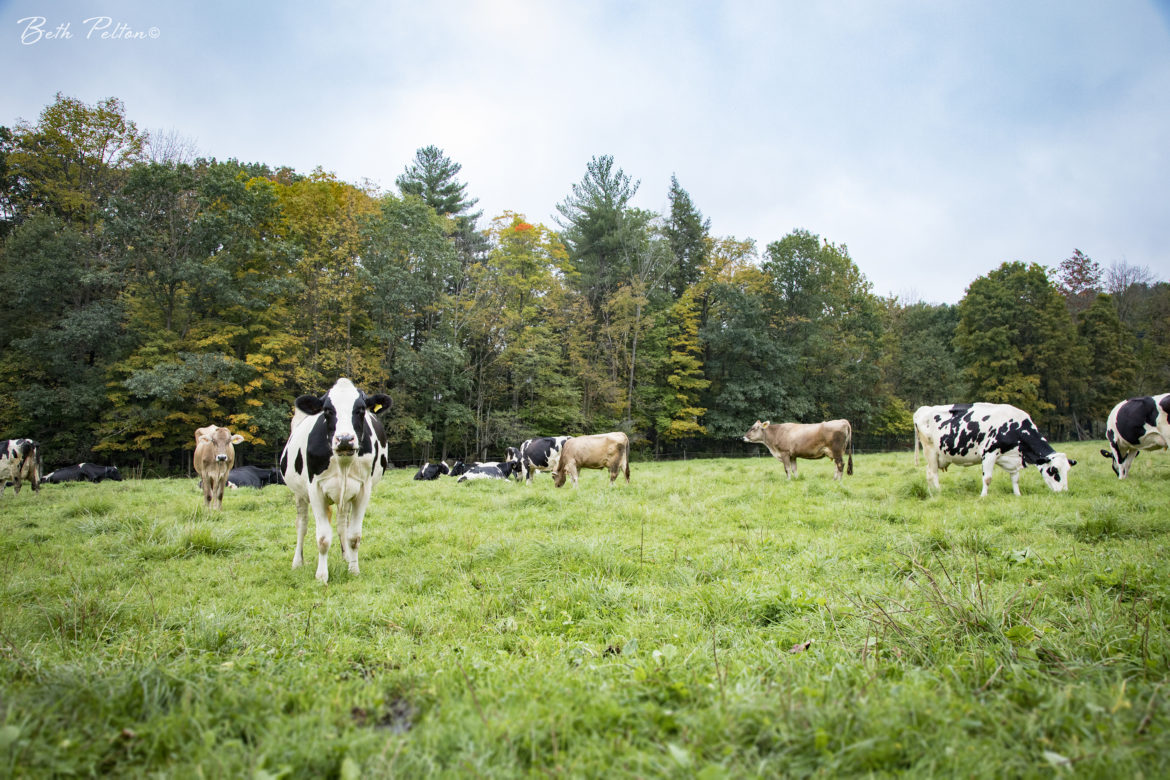
Over the years some New Hampshire farmers have shared with me how they see climate change hitting home because of milder winters.
And the Fourth National Climate Assessment (NCA4) explains how climate change is expected to impact the environments that support agriculture in the Northeast. State climatologist and University of New Hampshire Professor Mary Lemcke-Stampone is an author of the report’s Northeast chapter. According to the report, the science supports the farmers’ observations: milder winters are already changing local ecosystems and environments in ways that are and will continue to impact farming.
A maple syrup producer provided me a bit more detail from composite notebooks stacked in his kitchen cabinet: diaries kept by his dad faithfully recording night and daytime temperatures and tapping dates, a tradition he continued. The records note upward trends of February temperatures and earlier tapping.
Winter traditionally is the single most productive time of the year to cut wood because loggers depend on frozen ground to support their heavy machinery. There is no way to make up two weeks of lost time caused by an early winter thaw. Omnipresent and fragrant in springtime the purple lilac now blooms a week earlier than it did in 1970[RS1], making our state flower another icon of warming in New Hampshire.
Some New Hampshire farmers are seeing more than warming. They are also noticing erratic weather patterns. According to the NCA4, over the past 60 years extreme precipitation in the Northeast has increased 70 percent—more than in any other region of the country. In addition to getting wetter, heavy downpours are becoming more common in New Hampshire.
Scientists anticipate that a warmer, wetter New Hampshire will lead to lower yields of some cool season crops as well as new pests, but wine grapes, peaches and melons will fare better. Agriculture Commissioner Shawn Jasper knows farmers are being confronted with climate change.
At the recent annual meeting of the National Association of State Departments of Agriculture, Commissioner Jasper joined in unanimous support for a new policy recognizing the risks of climate change and asking for public and private resources to help farmers and producers adapt.
Jasper’s department has a limited budget, but farmers are nothing if not resilient, and are working with scientists and other institutions.
One example was an event on climate impacts and local farms organized by the Upper Valley Adaptation Workgroup where Dr. Joshua Faulkner of the University of Vermont Extension Program discussed how proper soil management is central to a productive farming future.
With different techniques, farmers can enhance farming resilience, improve water quality and capture carbon in the soil. The good news is, according to the UNH Cooperative Extension, sustainable and regenerative farming practices such as zero-till, reduced-till, organic farming and cover crops have increased in recent years[RS2] among New Hampshire farmers.
As part of a 2014 University of New Hampshire Sustainability Institute case study by Climate Fellow Ruby Woodside, Dorn Cox of Tuckaway Farm explains, “We know how to put carbon back into the ground. It is about communicating the practices to people and getting them to value it.”
But there is a bigger problem than Commissioner Jasper’s budget. At a pancake breakfast in Plymouth I listened to him cite archaic 1940s USDA research to dissuade the audience of human induced climate change.
In interviews he has previously acknowledged the existence of climate change but shifted to doubting the human contribution. His rhetoric is not dissimilar to that of Gov. Chris Sununu who will not join leaders of other states in upholding the Paris climate agreement.
Preparing for the longer and warmer growing season will entail investment in different agricultural products that can thrive under these conditions. It will require limiting damage from pests that come with warmer seasons, from intense precipitation that can disrupt plantings and harvests, and from late winter or early spring Arctic cold outbreaks that can freeze the spring blossoms that arrive earlier and earlier.
Farmers are looking for new solutions as they increasingly feel the effects of our mounting climate crisis on traditional livelihoods. Farmers require more knowledge today to diversify and steward 430,000 acres of managed New Hampshire farmland. Provided farmers have the support of consumers, the scientific community and policymakers, they can lead the way to building even broader community resilience.
The science summarized in the National Climate Assessment indicates that the climate inherited by future farmers will depend upon the actions we take in the next decade to reduce global warming emissions. Last month I received an inspiring brochure created by 12-year-old Maielle Merriam of Epping, “Soil is the Climate Solution,” spotlighting local carbon capture solutions.
If the United States is to lead the world, we must inspire the world, and in New Hampshire both leadership and inspiration can be found in our nation’s youth. The New Hampshire Department of Agriculture Markets and Food would do well to consider distributing Maielle’s brochure to our farmers.
Roger W. Stephenson has been involved in the communication of climate change science and solutions since 1991. He is the Northeast advocacy director for the Union of Concerned Scientists and lives in Stratham, N.H. He has a B.S. in zoology and a graduate degree in wildlife biology from the University of New Hampshire. He writes Field of View: Climate Change Through a New Hampshire Lens as a public service and InDepthNH.org distributes it to all news outlets in New Hampshire. This column is based on science performed by researchers at leading institutions and on the National Climate Assessment, a congressionally mandated report developed by thirteen federal agencies to help the nation “understand, assess, predict and respond to” climate change. The opinions expressed belong to the writer and do not reflect the publication’s views.
[RS1]https://nca2018.globalchange.gov/chapter/18/ and
[RS2]https://www.colsa.unh.edu/nhaes/article/2019/05/sustainableag





